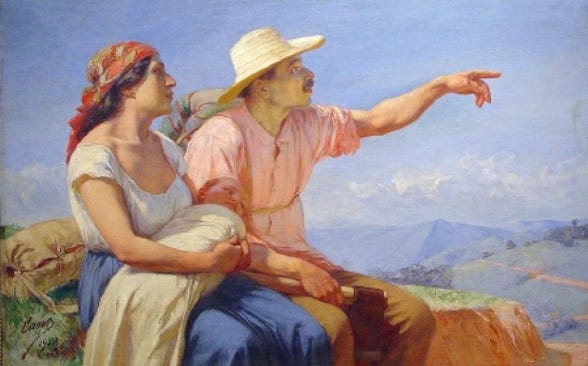Colombia, a country that, like a silent warrior, is often underestimated by those who don’t know it deeply. From the outside, some see it as just another Latin American country, but those who look closer discover something entirely different: a country full of potential, almost as if it's destined for greatness, but its people often don’t believe in themselves.
It’s a country of “almosts.” Sometimes it feels like we could be bigger, but other times, it seems impossible—like we are under some kind of curse.
The first thing that grabs your attention about Colombia is its diversity. And I’m not just talking about biodiversity, although that’s important too. But beyond that, what truly defines Colombia is its human diversity.
The history of this country is a blend of cultures, races, and traditions that have intertwined over the centuries, creating a unique, strong, and resilient identity. It’s funny how almost everyone who comes to Colombia looking for a fresh start manages to turn their lives around—like Venezuelans, or the singer Nicky Jam. They all rise again here. I’ve seen how many Venezuelans start businesses and succeed in Colombia. It’s as if Colombia is a land of second chances for everyone except for Colombians.
A Story of Survival
Colombia, like many other nations in Latin America, was shaped by Spanish colonization. The Spanish arrived in the 16th century, as always, in search of gold and riches. But they didn’t find the Inca Empire, nor the pyramids of the Maya or the Aztecs.
They encountered the Chibchas, a people who, though lesser-known, had reached an impressive level of civilization. Expert farmers, the Chibchas cultivated terraces with sophisticated irrigation systems and built roads and bridges that connected their towns. These warriors had a unique relationship with gold, a tradition that would later give rise to the legend of El Dorado.
The arrival of the Spanish not only brought conquest but also a process of mestizaje (racial mixing) that would change Colombia’s identity forever. Today, more than 85% of Colombia’s population is mestizo or white, a product of the fusion between European colonizers and native peoples. However, the European impact was not uniform. While countries like Argentina and Uruguay received large waves of European immigrants in the 19th century, Colombia remained relatively isolated from this process.
What is surprising, however, is the influence of the Basques. In the region of Antioquia, approximately 40% of the population has Basque ancestry. These immigrants didn’t just arrive—they thrived, becoming a dominant force in business and production. That entrepreneurial and hard-working mindset that defines many Antioquians can be traced back to those Basque roots.
The Power of Adaptation
But Colombia’s story doesn’t end there. What truly sets this nation apart is its ability to adapt and evolve. At the end of the 19th and early 20th centuries, while most European immigrants headed to the United States, Canada, or the Southern Cone, Colombia began receiving immigrants from the Middle East, especially Christian Syrians, Lebanese, and Palestinians.
These immigrants, like skilled strategists, arrived with few resources but quickly climbed the social ladder. They started as humble merchants on the Caribbean coast but soon moved into politics, cattle farming, and the media, becoming part of a powerful elite. Today, Colombia has the largest population of Arab descent in Latin America, with more than 3 million descendants.
Then there’s the African heritage. You can’t talk about the real Colombia without recognizing the contribution of Afro-descendants. Africans arrived as slaves around the same time as Europeans, but their story isn’t just one of oppression.
These men and women demonstrated incredible strength. In the 16th century, fugitive slaves founded the first free town in the Americas, San Basilio de Palenque, a place where, even today, Palenquero Creole is spoken—a language that blends Spanish with African languages.
Today, between 10% and 25% of Colombia’s population has African ancestry, and their influence is evident in the country’s culture, music, and art. On the Pacific and Caribbean coasts, the Afro-descendant population is dominant, while in the mountainous interior, mestizos and whites occupy the center.
This geographical distribution reflects how Colombia’s terrain has shaped its ethnic composition and, in turn, how different groups have influenced the national culture.
What Can We Learn from Colombia?
First and foremost, true strength does not come from homogeneity or uniformity. Just like in life, adversity and diversity are what truly shape champions.
Colombia has been influenced by Europeans, Africans, Arabs, and, of course, its native peoples. But instead of breaking under the weight of these influences, Colombia has embraced them, turning them into sources of pride and resilience.
So, what can you learn from Colombia? That it doesn’t matter where you come from—we are not a xenophobic country.
It’s impossible to be one, considering we have Africans, Europeans, Arabs, and natives all mixed together. Very few nations in the world have such a rare and extraordinary combination.



